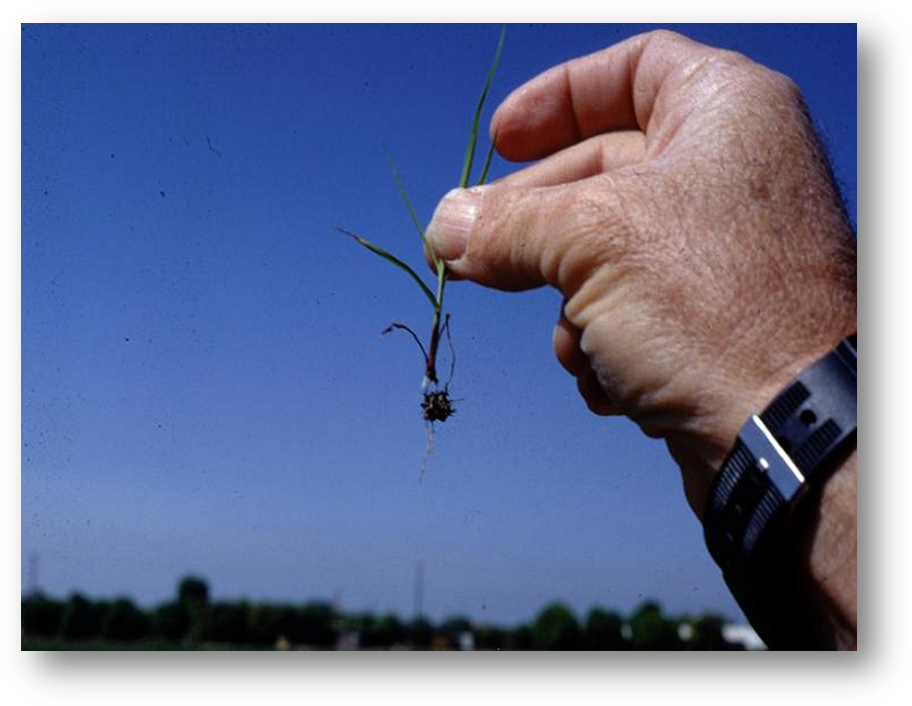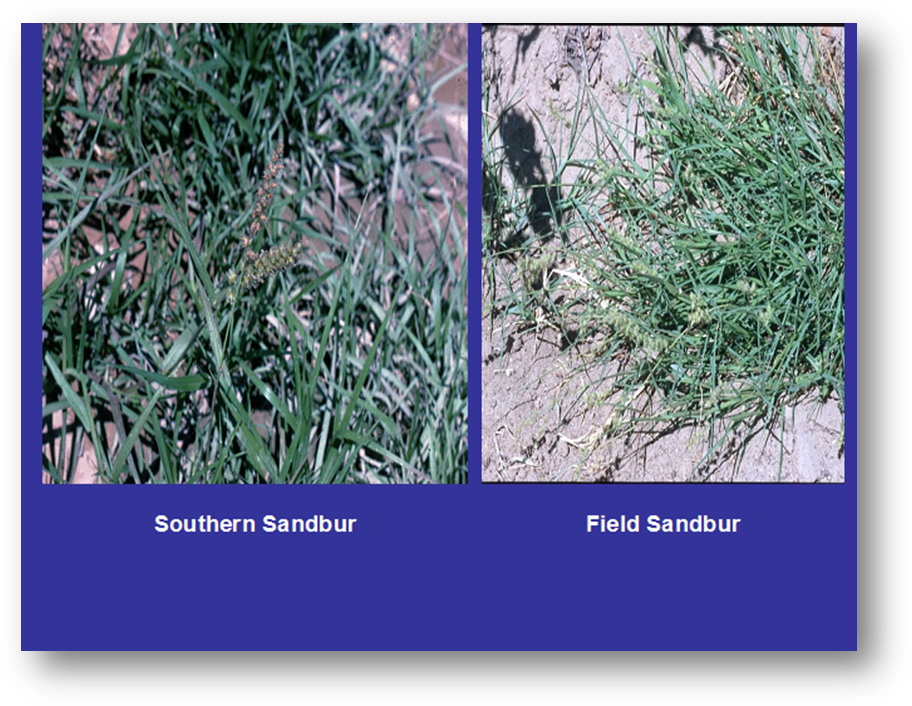
|
|
|
|

|
|||
|
|
|||
|
|
|||
|
Few weeds are as disliked or as difficult to control as sandbur. There are more
than 20 species of sandbur but only two are found in this area. Approximately 75%
of the sandbur in this region is field sandbur (Cenchrus longines) with the remainder
being southern sandbur (Cenchrus Encinitas). The burs are stiffer and longer than
those of bur clover but not as stiff as those on puncture vine. Their ability to
stick onto almost anything aids in their distribution. They are difficult to remove
and often break off in your fingers and cause temporary numbing of the nerves. Field
sandbur has a long thin leaf that resembles bermudagrass. The burs are yellow and
there are relatively few of them compared to southern sandburs which are denser,
have a reddish coloration and a broader leaf. Both have similar growth habits. They
are supposed to be summer annuals but many plants will overwinter and come back
the following season. They also both are found almost exclusively in sandy soil.
No one has ever explained to me why this is. Postemergence grass herbicides don’t
work on sandbur. It can be adequately controlled with preemergence herbicides (Prowl,
Treflan etc.) but these won’t work on plants that have overwintered. Each bur contains
3 to 6 seeds that germinate in the bur.



To contact Barry Tickes go to: btickes@ag.arizona.edu.
|
|||
| Back | |||
|
For questions or comments on any of the topics please contact Marco Pena at the Yuma Agricultural Center.
|
|||
|
Home |
Cotton | Veggies |
Forages | Grains
| Citrus |
Crop x Crop Insects | Diseases| Weeds | Pesticides | Economics | News | Weather | Research | Photos | Contacts | General Info. Copyright © 2001 University of Arizona, College of Agriculture and Life Sciences Webmaster: Al Fournier (acis@ag.arizona.edu) |
|||
